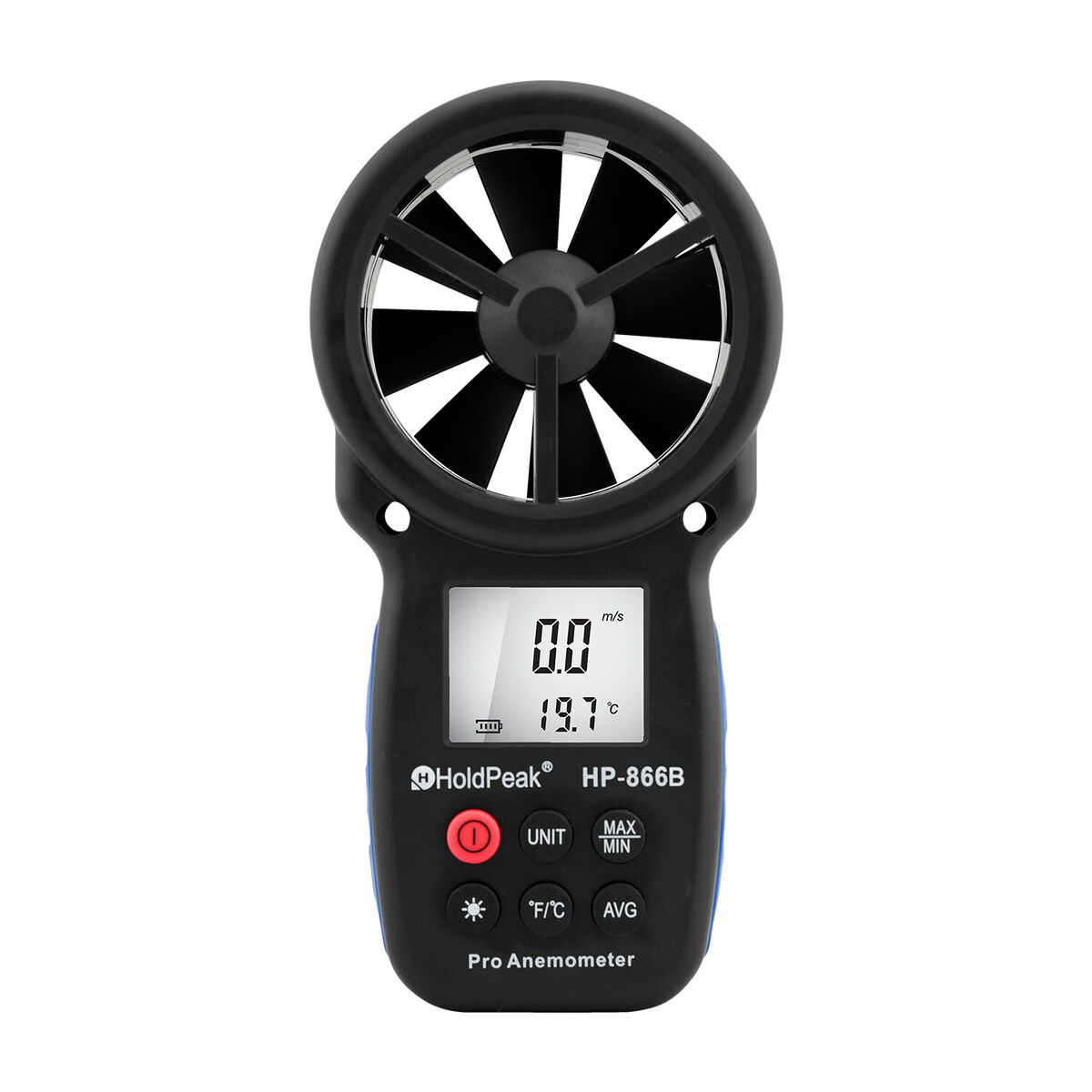The Function of an Anemometer in Improving Security for Outdoor Activities
The Function of an Anemometer in Improving Security for Outdoor Activities
Blog Article
Discovering the Features and Benefits of Anemometers for Climate Fanatics and Professionals
From cup anemometers to sonic anemometers, each kind brings its distinct set of benefits and applications, losing light on various facets of climatic conditions. As we delve right into the features and benefits of anemometers, a much deeper understanding emerges not just of dominating weather phenomena but likewise of the wider implications for markets like wind energy manufacturing and environmental study.
Value of Anemometers in Weather Condition Surveillance
Anemometers play a crucial role in weather condition monitoring by supplying precise measurements of wind speed, aiding in forecasting and understanding climate patterns. These instruments, ranging from standard cup anemometers to modern-day ultrasonic anemometers, are vital for meteorologists, scientists, and weather condition enthusiasts alike.

Types of Anemometers and Their Applications
The most usual types of anemometers include cup anemometers, vane anemometers, hot-wire anemometers, and ultrasonic anemometers. Cup anemometers consist of three or four mugs mounted on horizontal arms that turn with the wind, gauging its rate. Vane anemometers, on the various other hand, utilize an openly rotating vane to line up with the wind direction, supplying both wind speed and direction measurements.
Mug anemometers are durable and ideal for basic climate monitoring, while vane anemometers are favored for directional measurements. Ultrasonic anemometers are non-intrusive and provide high accuracy, often utilized in research study and specialized weather tracking applications.
Advantages of Using Anemometers in Forecasting
In weather forecasting, the use of anemometers provides vital benefits for boosting the precision of weather condition forecasting. Anemometers determine wind speed and direction, offering crucial data for forecasting weather patterns. By integrating wind data right into forecasting models, meteorologists can much better comprehend the motion of weather condition systems, prepare for changes in climatic conditions, and concern much more exact projections.
Additionally, anemometers play a crucial duty in assessing possible weather threats. Monitoring wind speeds assists forecasters anticipate extreme climate events such as hurricanes, hurricanes, and winter storms with greater accuracy. This very early warning system allows authorities to issue timely signals and apply essential safety actions, minimizing the dangers to life and building.
Furthermore, anemometers help in optimizing renewable resource production. By assessing wind patterns, meteorologists can determine ideal places for wind farms and anticipate power output, adding to the efficient generation of wind power.

Anemometers in Wind Energy Manufacturing
Offered the essential role anemometers play in offering precise wind information for weather condition projecting and danger evaluation, their significance includes the realm of wind energy manufacturing. Anemometers are crucial instruments in the field of wind energy, where the measurement of wind rate and instructions is important for determining the usefulness and performance of wind turbine installments. By accurately determining wind rates at differing elevations, anemometers aid optimize the positioning and style of wind turbines to make the most of power result.
In wind farms, anemometers are purposefully positioned to accumulate real-time wind data that is utilized to evaluate the possible energy production of a site. This information is crucial in figuring out the financial viability of wind energy tasks and in projecting power generation to ensure grid security. Additionally, anemometers help in keeping track of wind conditions to optimize wind turbine efficiency, protect against damages from high winds, and make certain the safety of workers operating in the location of wind generators.
Enhancing Climate Understanding With Anemometers

Anemometers play an essential duty in boosting our understanding of microclimates. These local weather can differ significantly from more comprehensive regional forecasts, making it necessary to have precise data for certain areas. anemometer. By strategically putting anemometers in numerous areas, scientists can gather thorough details on how wind acts in various surfaces, city settings, or bodies of water
In addition, anemometers add to boosting weather forecasting designs by giving real-time information on wind actions. This details is specifically valuable for predicting serious weather condition events, optimizing farming practices, and supporting markets like aviation and maritime navigation. In general, anemometers are vital instruments that allow us to investigate this site dive deeper right into the intricacies of weather systems, inevitably leading to even more better-informed decisions and accurate predictions.
Final Thought
In final thought, anemometers play an essential function in weather condition monitoring and forecasting by measuring wind rate and instructions. Anemometers likewise have applications in wind power manufacturing, further highlighting their significance in both weather forecasting and eco-friendly power fields.
From mug anemometers to sonic anemometers, each type brings its distinct set of advantages and applications, shedding light on different elements of climatic conditions. These instruments, varying from standard cup anemometers to Go Here contemporary ultrasonic anemometers, are essential for meteorologists, researchers, and climate lovers alike. The most usual types of anemometers consist of mug anemometers, vane anemometers, hot-wire anemometers, and ultrasonic anemometers. Cup anemometers are suitable and robust for basic climate monitoring, while vane anemometers are favored for directional measurements. Anemometers are necessary instruments in the area of wind energy, where the measurement of wind speed and direction is crucial for identifying the usefulness and effectiveness of wind turbine installments.
Report this page